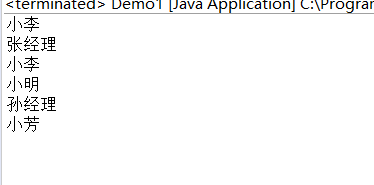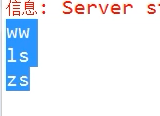Ognl
简介
1、OGNL的全称是Object Graph Navigation Language(对象图导航语言),它是一种强大的表达式语言通过它简单一致的表达式语法,可以存取对象的任意属性,调用对象的方法,遍历整个对象的结构图,实现字段类型转化等功能。它使用相同的表达式去存取对象的属性。
2、OgnlContext(ongl上下文)其实就是Map
重点:
1、一个上下文中只有一个根对象
2、取跟对象的值,只需要直接通过根对象属性即可
3、非根对象取值必须通过指定的上下文容器中的#key.属性去取
举个例子
正常情况下的教室、老师、学生
map 教室
OgnlContext=根对象(1)+非根对象(N)
老师:跟对象 1
学生:非根对象 N
分析
非根对象要通过"#key"访问,根对象可以省略"#key"
根对象与非根对象的区分,也就造成了取值是有差异性的
ognl结构图:

案例
目标:能够了解struts的传值的优先级
实体类:
package com.zxp.test;
public class Student {
private String name;
private String number;
public Student() {
super();
}
public Student(String name, String number) {
super();
this.name = name;
this.number = number;
}
public String getName() {
return name;
}
public void setName(String name) {
this.name = name;
}
public String getNumber() {
return number;
}
public void setNumber(String number) {
this.number = number;
}
@Override
public String toString() {
return "Student [name=" + name + ", number=" + number + "]";
}
}
package com.zxp.test;
public class Manager {
private String name;
public Manager() {
super();
}
public String getName() {
return name;
}
public void setName(String name) {
this.name = name;
}
@Override
public String toString() {
return "Manager [name=" + name + "]";
}
}
package com.zxp.test;
public class Employee {
private String name;
private Address address;
private Integer salary;
public Employee() {
super();
}
public Employee(String name, Integer salary) {
super();
this.name = name;
this.salary = salary;
}
public Integer getSalary() {
return salary;
}
public void setSalary(Integer salary) {
this.salary = salary;
}
public String getName() {
return name;
}
public void setName(String name) {
this.name = name;
}
public Address getAddress() {
return address;
}
public void setAddress(Address address) {
this.address = address;
}
@Override
public String toString() {
return "Employee [name=" + name + ", address=" + address + ", salary=" + salary + "]";
}
}
package com.zxp.test;
public class Address {
private String city;
private String country;
public Address() {
super();
}
public Address(String city, String country) {
super();
this.city = city;
this.country = country;
}
public String getCity() {
return city;
}
public void setCity(String city) {
this.city = city;
}
public String getCountry() {
return country;
}
public void setCountry(String country) {
this.country = country;
}
@Override
public String toString() {
return "Address [city=" + city + ", country=" + country + "]";
}
}
工具类
package com.zxp.test;
package com.zxp.test;
import ognl.Ognl;
import ognl.OgnlContext;
import ognl.OgnlException;
/**
* 用于OGNL表达计算的一个工具类
*
*/
public class OnglExpression {
private OnglExpression() {
}
/**
* 根据OGNL表达式进行取值操作
*
* @param expression
* ognl表达式
* @param ctx
* ognl上下文
* @param rootObject
* ognl根对象
* @return
*/
public static Object getValue(String expression, OgnlContext ctx,
Object rootObject) {
try {
return Ognl.getValue(expression, ctx, rootObject);
} catch (OgnlException e) {
throw new RuntimeException(e);
}
}
/**
* 根据OGNL表达式进行赋值操作
*
* @param expression
* ognl表达式
* @param ctx
* ognl上下文
* @param rootObject
* ognl根对象
* @param value
* 值对象
*/
public static void setValue(String expression, OgnlContext ctx,
Object rootObject, Object value) {
try {
Ognl.setValue(expression, ctx, rootObject, value);
} catch (OgnlException e) {
throw new RuntimeException(e);
}
}
}
** 测试Demo1**
package com.zxp.test;
import ognl.OgnlContext;
import ognl.OgnlException;
public class Demo1 {
/**
* @param args
* @throws OgnlException
*/
public static void main(String[] args) {
Employee e = new Employee();
e.setName("小李");
Manager m = new Manager();
m.setName("张经理");
// 创建OGNL下文,而OGNL上下文实际上就是一个Map对象
OgnlContext ctx = new OgnlContext();
// 将员工和经理放到OGNL上下文当中去
ctx.put("employee", e);
ctx.put("manager", m);
ctx.setRoot(e);// 设置OGNL上下文的根对象
/** ********************** 取值操作 *************************** */
// 表达式name将执行e.getName(),因为e对象是根对象(请注意根对象和非根对象表达式的区别)
String employeeName = (String) OnglExpression.getValue("name", ctx, e);
System.out.println(employeeName);
// 表达式#manager.name将执行m.getName(),注意:如果访问的不是根对象那么必须在前面加上一个名称空间,例如:#manager.name
String managerName = (String) OnglExpression.getValue("#manager.name",
ctx, e);
System.out.println(managerName);
// 当然根对象也可以使用#employee.name表达式进行访问
employeeName = (String) OnglExpression.getValue("#employee.name", ctx,
e);
System.out.println(employeeName);
/** ********************** 赋值操作 *************************** */
OnglExpression.setValue("name", ctx, e, "小明");
employeeName = (String) OnglExpression.getValue("name", ctx, e);
System.out.println(employeeName);
OnglExpression.setValue("#manager.name", ctx, e, "孙经理");
managerName = (String) OnglExpression.getValue("#manager.name", ctx, e);
System.out.println(managerName);
OnglExpression.setValue("#employee.name", ctx, e, "小芳");
employeeName = (String) OnglExpression.getValue("name", ctx, e);
System.out.println(employeeName);
}
}
效果图

测试Demo7
package com.zxp.test;
import com.opensymphony.xwork2.ActionContext;
import com.opensymphony.xwork2.util.ValueStack;
public class Demo7 {
/**
*
* 值栈的使用
*
*/
public String test1(String[] args) {
// 栈:表示一个先进后出的数据结构
ValueStack vs = ActionContext.getContext().getValueStack();
// push方法把项压入栈顶
vs.push(new Employee("zs", 22));
vs.push(new Employee("ls", 22));
vs.push(new Employee("ww", 22));
// pop方法移除栈顶对象并作为此函数的值返回该对象
Employee e = (Employee) vs.pop();
System.out.println(e.getName());
e = (Employee) vs.pop();
System.out.println(e.getName());
e = (Employee) vs.pop();
System.out.println(e.getName());
return "rs";
}
/**
* 此例用于模拟struts2的值栈计算过程
*
* @param args
*/
public String test2(String[] args) {
ValueStack vs = ActionContext.getContext().getValueStack();
vs.push(new Employee("张雇员", 2000));// 1
vs.push(new Student("小明同学", "s001"));// 0
System.out.println(vs.findValue("name"));
System.out.println(vs.findValue("salary2"));
ActionContext ac = ActionContext.getContext();
return "rs";
}
}
配置struts-sy.xml
<action name="ognl_*" class="com.zxp.test.Demo7" method="{1}">
<result name="rs">/rs.jsp</result>
</action>
Jsp页面
<h3>讲解ognl值栈</h3>
<a href="${pageContext.request.contextPath}/sy/ognl_test1.action">测试7</a>
<a href="${pageContext.request.contextPath}/sy/ognl_test2.action">测试8</a>
页面显示

效果图


核心点:
1、OGNL的全称是Object Graph Navigation Language(对象图导航语言),它是一种强大的表达式语言
2、OgnlContext(ongl上下文)其实就是Map (教室、老师、学生)
3、根对象和非根对象的理解
4、ValueStack
同一请求中只创建一个上下文
先压action,再呀modeldriven
从上往下找值
5、struts2中传递数据





















 2088
2088











 被折叠的 条评论
为什么被折叠?
被折叠的 条评论
为什么被折叠?








